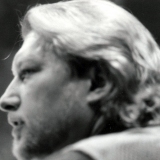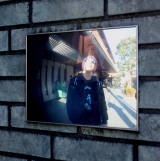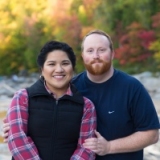- Forum
- Photography and Camera Forum
- Photo Galleries - For General Display or Critique
- Film Photography
- SLR vs a DSLR
SLR vs a DSLR
-
 Topic Author
Topic Author
- Hussein El-Edroos
- Newbie
-
- Nikon Coolpix 4800
- Followers: 3
- Posts: 6
-
Points:
0
Post #178877
-

- Rob pix4u2
- Photo Guru
- Nikon N90s & FE film & D90 and D90 digital bodies
- Followers: 196
- Posts: 4204
-
Points:
30
Post #178879
Remember to engage brain before putting mouth in gear
Rob Huelsman Sr.
My Facebook www.facebook.com/ImaginACTIONPhotography
-
 Topic Author
Topic Author
- Hussein El-Edroos
- Newbie
-
- Nikon Coolpix 4800
- Followers: 3
- Posts: 6
-
Points:
0
Post #178906
-

- KCook
- Photo Elder
-
- Canon EOS 50D and Olympus E-P5
- Followers: 1325
- Posts: 5410
-
Points:
32913
Post #179079
www.photographytalk.com/forum/photograph...to-the-dslrslr-world
Also, Auto Focus now rules. Which can be a big adjustment. More here -
photo.tutsplus.com/tutorials/shooting/ac...ness-in-your-images/
And then there is the thicket of RAW. Again -
www.photographytalk.com/forum/photograph...-discovered-raw-mode
Kelly Cook
-

- Baydream
- Moderator
-
- Canoni/60D/70D/5DmkIII
- Followers: 388
- Posts: 11185
-
Points:
7278
Post #179099
Shoot, learn and share. It will make you a better photographer.
fineartamerica.com/profiles/john-g-schickler.html?tab=artwork
Post #179187
'Autofocus is a big adjustment...' you can say that again Kelly! That has been the hardest thing for me learning to use a digital camera since I've used mostly manual/mechanical cameras. I have a variety of different film cameras and on a new (vintage) camera, once I figure out the controls and settings I don't find it too hard to switch from one to another. Sometimes if I haven't used a camera in awhile it may take some thinking to remember various settings/controls on a particular camera.
That Canon AE-1 is a nice camera.
Sharon
-

- Ulahoopski
- New Kid On The Block
-
- Followers: 2
- Posts: 19
-
Points:
0
Post #179200
The statement is pointless. The finger is speechless.
-
 Topic Author
Topic Author
- Hussein El-Edroos
- Newbie
-
- Nikon Coolpix 4800
- Followers: 3
- Posts: 6
-
Points:
0
Post #179213
-

- rmeyer7
- Master of the Lens
-
- Canon 6D, Canon 5D mk. ii, Canon 50D
- Followers: 105
- Posts: 1640
-
Points:
2086
Post #179281
As for which would be better, I guess it goes back to what Kelly said about the difference in focal length. If you're accustomed to the reach of a 50mm lens, you'll have some adjusting to do when that same lens is equivalent to an 85mm! How much of an obstacle that might be really depends on you.
Another advantage would be the better noise control with a full frame. But with your background being film, that probably won't be as much of an issue. Any modern consumer-level DSLR will give you a much cleaner image at ISO 400 than you're used to getting from ASA 400 film.
Feature-wise, if you want the pro-like features that you find on full-frame cameras, you can find them on a number of crop-sensor models as well. On the Canon side, anything with a 2-digit number before the "D" (40D, 50D, etc) will have similar controls to a 5D. The 7D is intended to be even closer to the full-frame cameras in functionality; it's basically a fully pro-level camera that happens to have a crop sensor. So think of the Canon models this way:
###D or "Rebel" series - Consumer
##D - "Pro-sumer"
#7 - Professional grade
On the Nikon side, there are also similar levels but I don't know the model numbers -- there are lots of helpful Nikon people here that can help with that though
-

- KCook
- Photo Elder
-
- Canon EOS 50D and Olympus E-P5
- Followers: 1325
- Posts: 5410
-
Points:
32913
Post #179380
Kelly
-

- Henry Peach
- Apprentice
-
- I currently use a 5DII or Sony Nex-3 most of the time.
- Followers: 50
- Posts: 2925
-
Points:
16
Post #179448
Hussein El-Edroos wrote: If I were to go for a DSLR, would a full format camera be better than a half-format camera. Could you get a full format camera be under $1,000?
Used Canon 5D's are just starting to get down to $1000ish (body only) from the major used camera sellers . That means you probably can find one under $1000 from an owner who is selling their own camera.
Whether it would be better or not really depends on you. There is no doubt that the 5D is a wonderful camera, but so are many of the APS-C DSLRs. I think most of the debate on the internet about APS-C or 35mm is driven by the blind determination that bigger is better. I think most folks would be better served worrying about what features the various models offer them rather than format size.
I shoot with 35mm DSLRs, but if it were a choice between an APS-C DSLR and an expensive, fast lens vs a 35mm DSLR and a cheaper, slower lens I would go with the fast lens. That's a more important consideration for me. I've got large prints from APS-C DSLRs hanging right next to large prints from 35mm DSLRs, and people can't tell a difference. My experience has been that an 8mp APS-C, Nikon or Canon DSLR is easily capable of matching 35mm film image quality.
-

- Stealthy Ninja
- Moderator
-
- Fuji X stuff and a 1DsIII for some reason
- Followers: 982
- Posts: 16300
-
Points:
6837
Post #179453
Now this frees you up to choose Nikon should you wish.
Nikon has some nice cameras and lenses too. Their cameras come in two basic formats. DX (1.5x crop) and FX (full frame "35mm" cams).
In the crop Nikon cams (DX) I'd only really recommend the D7000 at this stage.
For FX it would be hard to get a camera under $1000usd but the best bet would be a D700. They also have the D3 (older model) and D3s and D3x, but those are way over $1000usd.
Good luck.
-

- Stealthy Ninja
- Moderator
-
- Fuji X stuff and a 1DsIII for some reason
- Followers: 982
- Posts: 16300
-
Points:
6837
Post #179455
Henry Peach wrote: There are a lot of differences between the AE-1 and a DSLR. You would find less differences between an electronic, AF Canon of the 1990s and a DSLR. Exposure is the same. Digital, particularly if shooting jpeg, is not as forgiving as print film, but more so than slide film. As others have said the main difference is probably the format change.
Hussein El-Edroos wrote: If I were to go for a DSLR, would a full format camera be better than a half-format camera. Could you get a full format camera be under $1,000?
Used Canon 5D's are just starting to get down to $1000ish (body only) from the major used camera sellers . That means you probably can find one under $1000 from an owner who is selling their own camera.
Whether it would be better or not really depends on you. There is no doubt that the 5D is a wonderful camera, but so are many of the APS-C DSLRs. I think most of the debate on the internet about APS-C or 35mm is driven by the blind determination that bigger is better. I think most folks would be better served worrying about what features the various models offer them rather than format size.
I shoot with 35mm DSLRs, but if it were a choice between an APS-C DSLR and an expensive, fast lens vs a 35mm DSLR and a cheaper, slower lens I would go with the fast lens. That's a more important consideration for me. I've got large prints from APS-C DSLRs hanging right next to large prints from 35mm DSLRs, and people can't tell a difference. My experience has been that an 8mp APS-C, Nikon or Canon DSLR is easily capable of matching 35mm film image quality.
True but it's not just about being able to tell the difference in prints. You know as well as I that the extra pixels give you about 1.5 stops more light using FF cams (assuming the same pixel density and sensor tech) also the fact that at a given MP amount the larger photosites allows for better noise control (meaning you can use higher iso). Plus there's the shallower DOF effect FF has over crop.
That said crop camera are certainly very capable.
-

- Henry Peach
- Apprentice
-
- I currently use a 5DII or Sony Nex-3 most of the time.
- Followers: 50
- Posts: 2925
-
Points:
16
Post #181589
Stealthy Ninja wrote: True but it's not just about being able to tell the difference in prints. You know as well as I that the extra pixels give you about 1.5 stops more light using FF cams (assuming the same pixel density and sensor tech) also the fact that at a given MP amount the larger photosites allows for better noise control (meaning you can use higher iso). Plus there's the shallower DOF effect FF has over crop.
I do not know such things. I've had plenty of opportunity to compare my old 5D to newer APS-C cameras at ISO 3200. Shallower DOF for a give angle of view is the only point I agree on.
And actually, for me and most of the world, it is just about what the finished photograph looks like. Only photo geeks care what the pixel peep samples look like.
-

- KCook
- Photo Elder
-
- Canon EOS 50D and Olympus E-P5
- Followers: 1325
- Posts: 5410
-
Points:
32913
Post #181594
Let me say up front that I am not a low light Ninja. So, for me, the only advantage with a FF body would be the ability to take full advantage of old WA primes. It was cheaper to go with a crop body and new WA zoom instead. Yes the zoom is slower than a nice prime, so I end up shooting at higher ISO. But the results still look good, so I am sticking with crop bodies. A FF body is pretty hard for most hobbyists to justify.
Kelly
- Forum
- Photography and Camera Forum
- Photo Galleries - For General Display or Critique
- Film Photography
- SLR vs a DSLR
Latest Reviews
The Canon EOS R100 is an entry-level mirrorless camera introduced in 2023. But just because it’s an entry-level camera doesn’t mean it’s a bare-bones camera. Find out why in this review!
Nikon’s retro-looking Nikon Zfc is anything but retro. Under its classic body is a host of features and amenities that make it a worthwhile compact mirrorless camera for 2024.
The Canon EOS R50 is one of the newest R-system cameras from Canon. Is it worth your money? Find out all the details you need to know in this comprehensive review.
The Sony FE 70-200mm f/2.8 GM OSS II is Sony’s flagship mirrorless zoom lens. As such, it’s loaded with features and has a top-shelf build quality that makes it a top pick!
Latest Articles
Creating impactful photos of landscapes depends on many factors, not the least of which is your talent behind the lens. This guide explores other elements required for the best product.
The Canon EOS R100 is an entry-level mirrorless camera introduced in 2023. But just because it’s an entry-level camera doesn’t mean it’s a bare-bones camera. Find out why in this review!
Are you ready to upgrade your camera? Before buying new, you might consider the value of purchasing used gear to save money.
The Olympus OM-D E-M10 Mark IV is a micro four thirds camera released in 2020. It’s an entry-level system along with the OM-D E-M5 Mark III. Use this guide to determine which one is best for you!
Blue hour photography might not be as well known as golden hour photography, but it is every bit as good a time to create epic images of landscapes. Learn how in this quick tutorial!
Nikon’s retro-looking Nikon Zfc is anything but retro. Under its classic body is a host of features and amenities that make it a worthwhile compact mirrorless camera for 2024.
Moving from taking snapshots of your dog to creating beautiful images doesn’t have to be that difficult! Use the tips outlined in this dog photography guide, and you’ll get better results in no time.
Acrylic print photos are a beautiful way to display your favorite images. But they don’t come without some questions. Get all the answers you need about this medium in this guide!

















